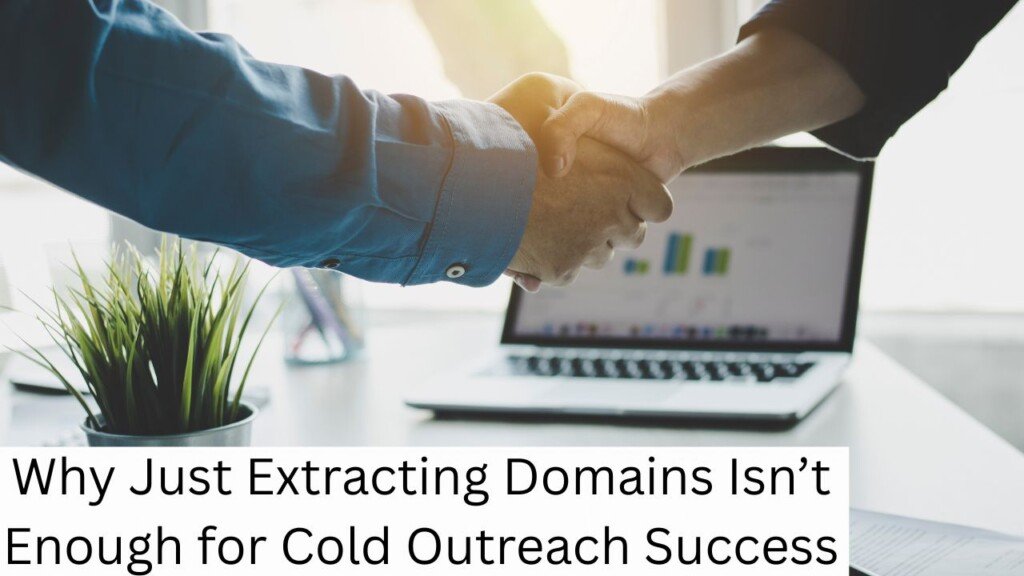Why Just Extracting Domains Isn’t Enough for Cold Outreach Success
So, you’ve got a list of domains. Great. But let me ask you something — now what?
A raw domain is just that: raw. No contact, no context, no connection. If you’re stopping your workflow after using a URL to Domain Converter, you’re missing the most critical part of outreach — the human element.
Let’s break down exactly why domain extraction alone won’t cut it anymore, especially if you want to run high-performing outreach campaigns in the U.S. market.

What’s the Real Goal of Domain Extraction?
At its core, domain extraction is about organizing messy data. You strip out domains from long URLs to:
- Clean up lead lists
- Aggregate contact sources
- De-dupe domains before outreach
It’s step one. Not the whole playbook.
Think of it like getting a phone number without a name. You wouldn’t just cold dial it, right?
What’s Missing? The Contact Layer.
Once you have domains, the next question is obvious:
“Who do I talk to from this domain?”
Here’s where most people fumble:
| Mistake | Why It Fails |
| Stopping at domain collection | You’ve got addresses, but no recipients |
| Guessing email formats | High bounce rates + zero personalization |
| Generic contact forms | They’re black holes for outreach |
Instead, what you need is a direct path to real inboxes of decision-makers.
How to Go From Domain to Inbox — In 1 Click
Here’s a smarter workflow you should follow:
- Extract URLs → Domains using our Bulk URL to Domain Converter
- Find Verified Emails linked to those domains using a dedicated email discovery tool
- Validate Emails to lower bounce rates (avoid deliverability issues)
- Segment by Role or Department — Not every email on a domain is useful
- Personalize & Send with context-rich messaging
This is how pros do it — especially when targeting U.S.-based companies, marketers, or local businesses.
Why U.S. Marketers Need More Than Just Domains
In the U.S. especially, cold email laws (think CAN-SPAM) demand that your outreach be intentional and directed. That means guessing a support@ or info@ inbox just won’t fly. You need:
- Names + Roles: So you know who you’re writing to
- Verified Emails: So you actually land in their inbox
- Intent Clues: So you don’t sound like a robot
Common Questions We Get (And How to Answer Them)
1. Can’t I Just Use Hunter or Clearbit After?
Sure, but why not plug them into your workflow directly? After you convert URLs to domains, you can bulk pass that data to Hunter.io, Apollo, or Snov.io to fetch emails instantly.
2. What If My Niche Is B2B SaaS or Local Services?
Doesn’t matter. Every B2B niche benefits from:
- Better list hygiene
- Accurate contact data
- Personalized messages
This applies even more in saturated spaces where generic outreach is ignored.
Turn Cold Data Into Warm Leads
If you’re doing outreach for:
- Link building
- Guest posting
- Partnership pitches
- Sales
you already know the pain of sending 100 emails and getting 2 replies.
Domains alone don’t solve that. But verified inboxes do.
Final Thoughts: Don’t Just Stop at Domains
If domain extraction is the engine, then contact discovery is the steering wheel. You can’t drive without both.
So the next time you’re using a tool like our URL to Domain Converter, ask yourself:
“Am I building a list of websites, or a list of people I can actually talk to?”
If it’s the latter, it’s time to level up.
DR – What to Do After Domain Extraction
- Extract the domain
- Discover email addresses tied to that domain
- Validate those emails
- Segment your contacts
- Personalize your message
Ready to go from domain to inbox? Try the URL to Domain Converter here and unlock the step that actually moves the needle.